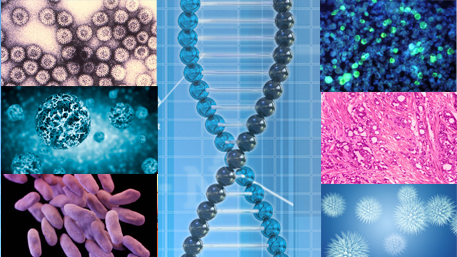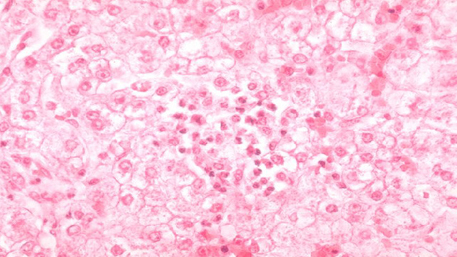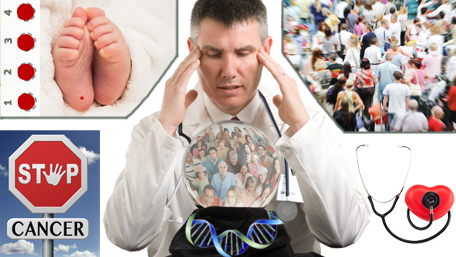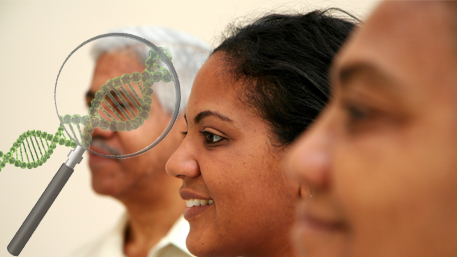Search Results
10 results for rare disease
The Science of Gene-Environment Interaction at the Centers for Disease Control and Prevention and Agency for Toxic Substances and Disease Registry

Now, more than ever, we are aware that our environment has implications for our health. We are also learning more about the effects of inherited traits, such as blood type, on disease susceptibility and progression. Understanding the interactions between our environment and our genes and how they affect health outcomes offers a multitude of potential
Posted on byA New Public Health Assessment of the Disease Burden of Hereditary Hemochromatosis: How Clinically Actionable is C282Y Homozygosity?

This blog post is based on a recent paper by Grosse, Gurrin, Bertalli, and Allen in Genetics in Medicine. Hereditary hemochromatosis (HH) attributable to mutations in the HFE gene is the most common autosomal recessive disorder among adults of northern European origin. It occurs in 1 in 300 non-Hispanic whites in the United States. Approximately
Posted on byCan we use genetic screening of healthy populations to save lives and prevent disease? Join the conversation.

On January 30, 2017, CDC held a special workshop to discuss the role of public health in the implementation of genetic screening programs beyond the newborn period. The workshop brought together panelists from the worlds of medical genetics and public health practice, including cancer, birth defects, and laboratory science. Workshop presenters and a CDC panel discussed
Posted on by 6 CommentsInfectious Diseases: Precision Medicine for Public Health

Until now, most medical treatments have been designed for the “average patient.” As a result of this “one-size-fits-all” approach, treatments can be very successful for some patients but not for others. Precision Medicine, on the other hand, is an innovative approach that takes into account individual differences in people’s genes, environments, and lifestyles. The Precision
Posted on byNobody is average but what to do about it? The challenge of individualized disease prevention based on genomics

Each week, Garrison Keillor shares with National Public Radio listeners the latest news from Lake Wobegon where “all the women are strong, all the men are good looking, and all the children are above average.” The concept of “average” is deeply rooted in our scientific analysis of all health related traits such as height,
Posted on byHow Can We Use Genetic Testing in Population Screening for Common Diseases?

Scientific and implementation challenges Population screening for disease is a concept that has been around for many decades. Its main purpose is early detection and treatment of asymptomatic disease, or risk assessment and prevention of future disease, in order to improve health outcomes in individuals and populations. Examples include mammography in breast cancer screening and
Posted on by 1 CommentTracking the Impact of the All of Us Research Program: The All of Us Reports and Publications Database

The All of Us Reports and Publications Database (AofURPD) is a continuously updated, searchable database referencing and linking to peer reviewed journal publications, preprint records, as well as select information from websites and media sources that relate to the All of Us Research Program. This blog provides a baseline overview of the content of the
Posted on by 3 CommentsFrom Guthrie to Genomes: The Continued Evolution of Newborn Screening

Two recent articles by Bick et al. and Watson et al. discussed the future of newborn screening and identified considerations and needs for the evolution of the newborn screening system as it tries to meet the growing demands to screen for more rare diseases and incorporate genomic technologies. As newborn screening (NBS) moves past 60
Posted on by 1 CommentFrom Guthrie to Genomes: Expanding Bioinformatic Capabilities in Newborn Screening Programs

Through a funding opportunity from CDC’s Office of Genomics and Precision Public Health in collaboration with the Office of Advanced Molecular Detection, CDC’s Newborn Screening and Molecular Biology Branch will conduct a two-year project to develop a streamlined national newborn screening (NBS) bioinformatics pipeline to help in expanding the use and utility of gene and
Posted on byPublic Health Genomics Priorities Through a Health Equity Lens

Achieving Health Equity in Genomics and Precision Medicine is More Important than Ever The CDC Office of Genomics and Precision Public Health is undergoing strategic planning to identify priorities and actions for genomics and precision medicine. As we embark on this work, we are focusing on health equity. The potential for genomics and precision medicine
Posted on by